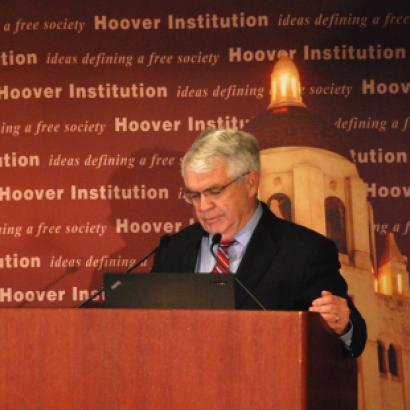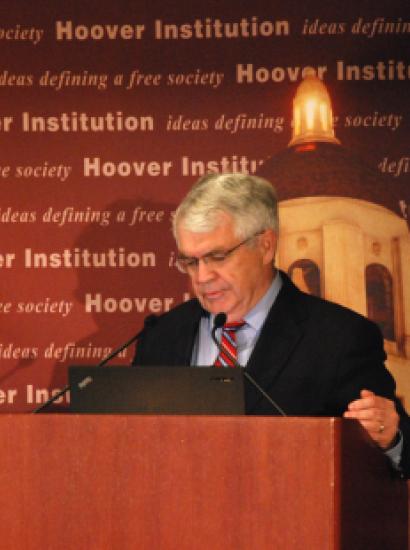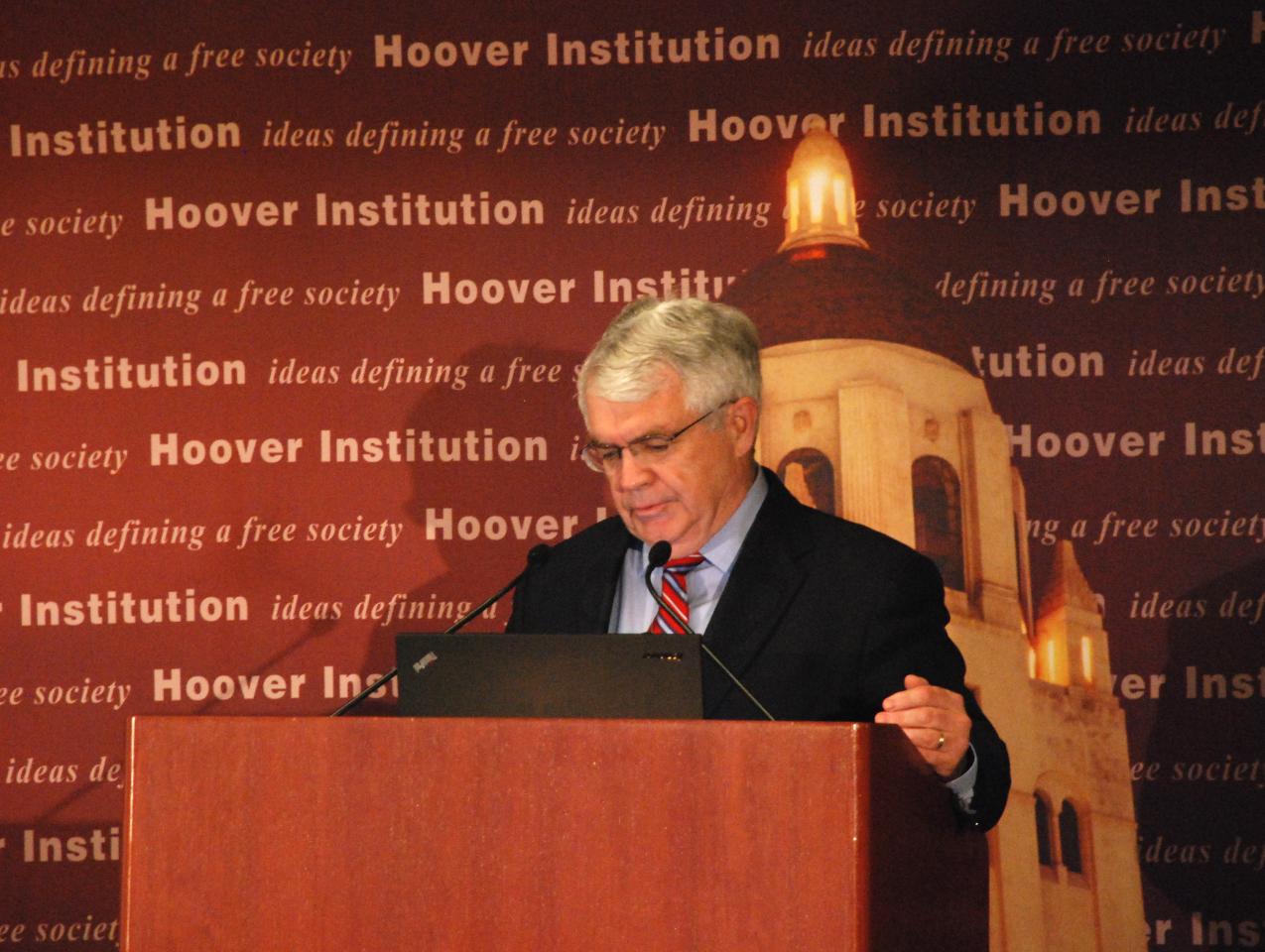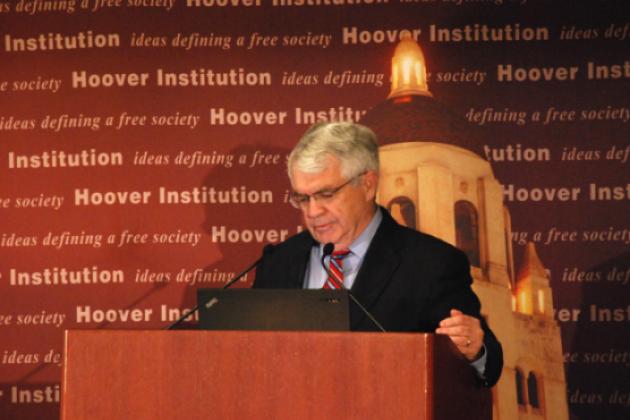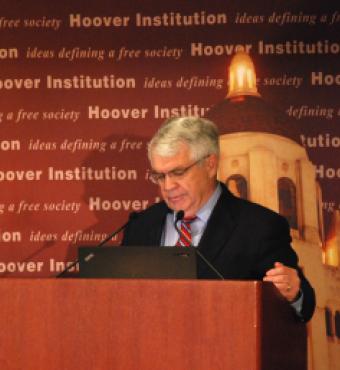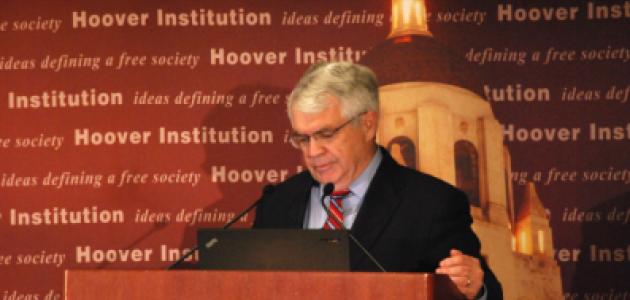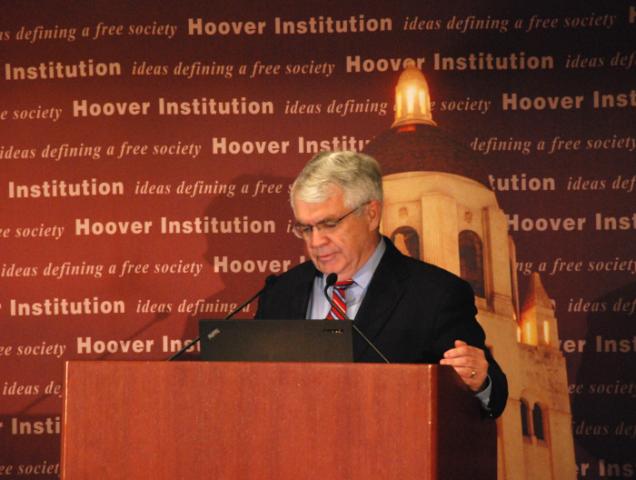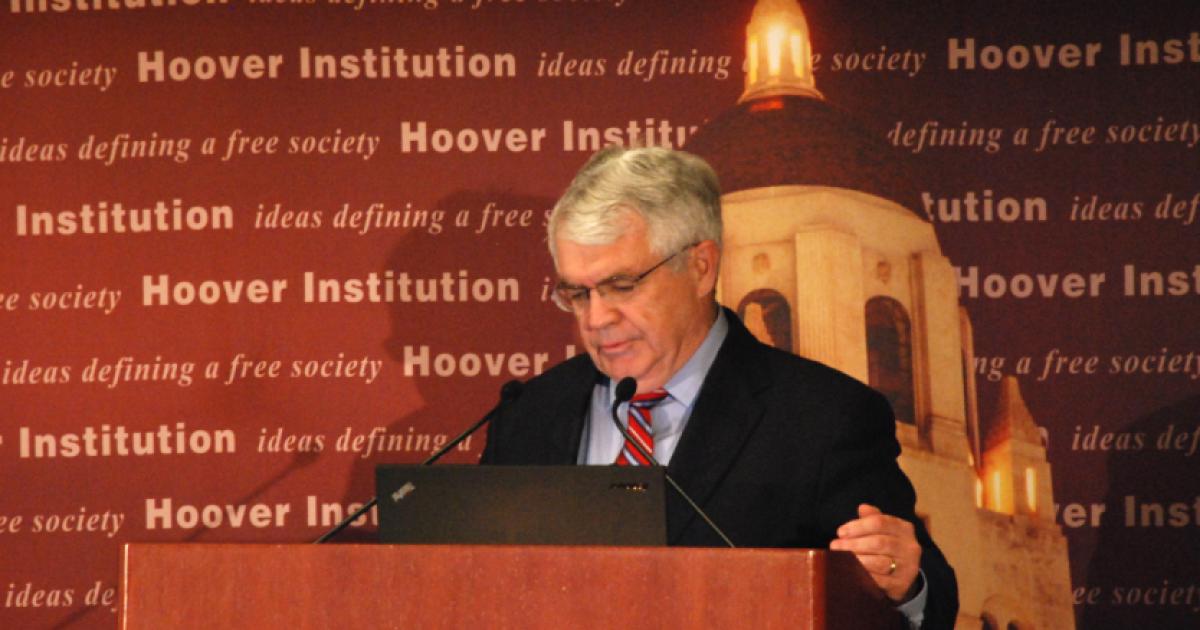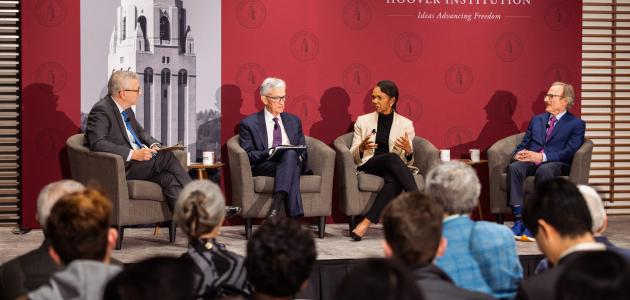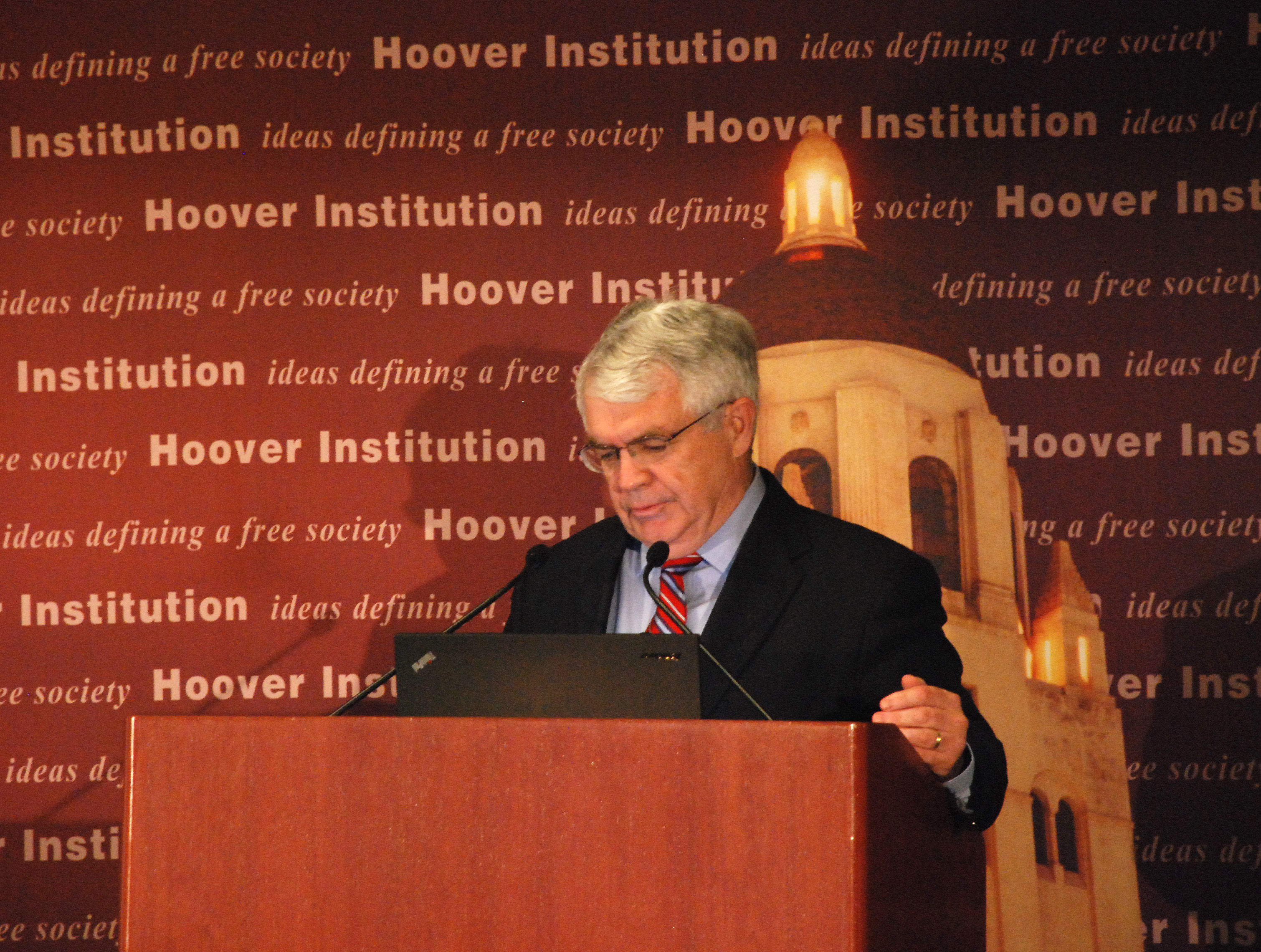
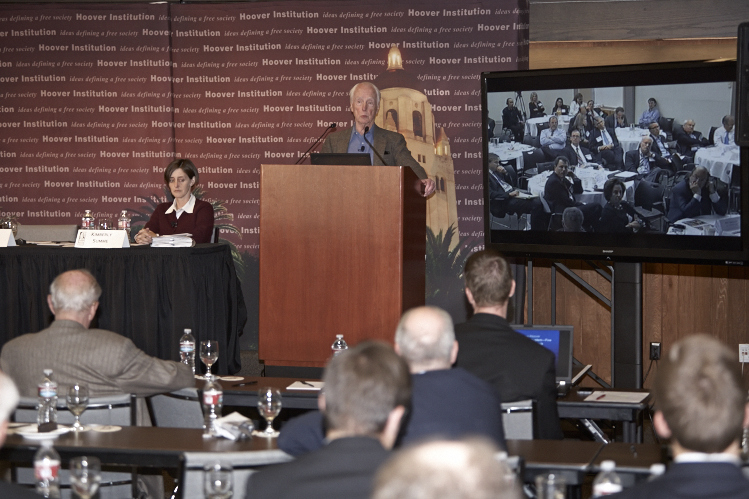
(from left to right) Kimberly Summe, Ken Scott
The 2008 financial crisis wreaked havoc on the American economy. Five years later, questions remain regarding the origins of the crisis and the effectiveness of the policy response to the collapse. On Tuesday, the Brookings and Hoover Institutions simulcasted a joint conference of legal and economic scholars who gathered to discuss those questions. The conference, led by Stanford economist and Hoover senior fellow John Taylor and Brookings Institution senior fellow Martin Bailey, was held simultaneously in Washington, DC, and at Stanford University in Stanford, CA.
The conference began with a panel on the causes and effects of the financial crisis. Panelists discussed several potential explanations. Weak, unenforced, or poorly designed regulations failed to stop excessive leveraging. Moral hazard, exacerbated by the March 2008 bailout of Bear Stearns, provided incentives for banks to assume larger risks instead of tempering their behavior. The Federal Reserve’s decision to keep interest rates low in the years preceding the crisis fueled a search for greater yield and greater risk-taking.
The conference also explored the policy response to the crisis. Participants largely agreed that the Federal Reserve’s actions, although imperfect, averted a larger collapse of financial markets. There was a lack of consensus, however, about the efficacy of the central bank’s more recent actions. Several panelists questioned the effectiveness of the recent rounds of quantitative easing and expressed concern regarding the Federal Reserve’s ability to reduce its portfolio of long-term assets.
The afternoon panels focused on the Dodd–Frank Wall Street Reform and Consumer Protection Act. Panelists reviewed provisionsof the act intended to prevent future bailouts and provide a framework for an orderly resolution of large insolvent banks. Although several panelists argued that the act reduced the likelihood of a future crisis, most participants agreed that the 2010 legislation had shortcomings. Some legal and economic scholars expressed hope that the bankruptcy law might serve as a superior substitute for the cumbersome Dodd-Frank resolution process. The discussion largely echoed the concepts outlined in the recent Hoover Institution Press book edited by Hoover senior fellows Kenneth E. Scott and John B. Taylor, Bankruptcy not Bailout.
Although the conference focused on the monetary and regulatory rules necessary to prevent future financial crises, several of the scholars highlighted structural problems in the U.S. economy that merit greater attention. Reforming the corporate tax code, rebuilding the country’s infrastructure, and improving the nation’s education system were offered as policy areas to strengthen the underlying U.S. economy.







